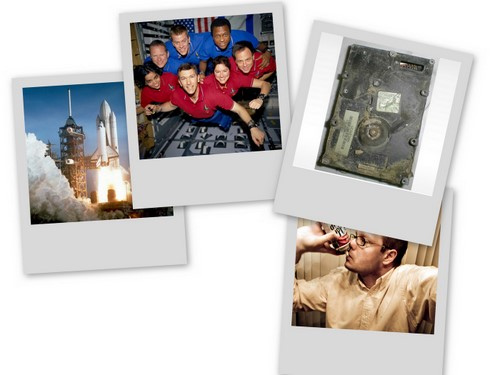They died for Reddi-Wip?

Jon Edwards often manages what appears impossible. He has recovered precious data from computers wrecked in floods and fires and dumped in lakes. Now Edwards may have set a new standard: He found information on a melted disk drive that fell from the sky when space shuttle Columbia disintegrated in 2003.
"When we got it, it was two hunks of metal stuck together. We couldn't even tell it was a hard drive. It was burned and the edges were melted," said Edwards, an engineer at Kroll Ontrack Inc., outside Minneapolis. "It looked pretty bad at first glance, but we always give it a shot."Associated Press: Data from Columbia disk drives survived the shuttle accident
and the fruits of the data recovery, you ask?
Let's do a little science experiment. If you have a can of whipped cream in the fridge, go get it out. Spray a generous dollop into a spoon and watch carefully.
Notice anything interesting? The whipped cream just did something rather puzzling. First it flowed smoothly out of the nozzle like a liquid would, and then, a moment later, it perched rigidly in the spoon as if it were solid. What made it change?
Whipped cream performs this rapid changing act because of a phenomenon called "shear thinning." When part of the foam is forced to slide or "shear" past the rest of the foam, the foam "thins." It becomes less like honey and more like water, allowing it to flow easily until the shearing stops.
